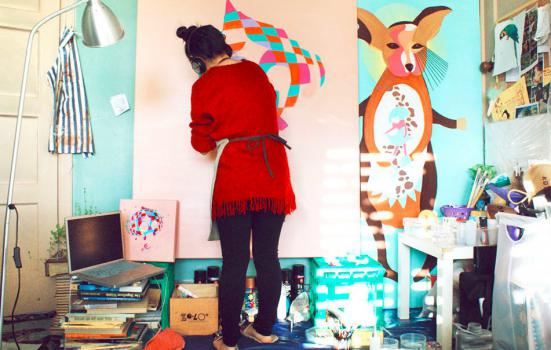Did you know that many artists are entitled to royalties when their work is resold? Daniel Rudd answers your questions about the artist’s resale right.

ollanani via Visualhunt.com / CC BY-ND
The Artist’s Resale Right (ARR) was introduced in the UK a decade ago. Thanks to this right, over the last decade the Design and Artists Copyright Society (DACS) has distributed nearly £50m to more than 3,900 artists and artists’ estates. But despite a decade of ARR in action, many artists do not know that they may be entitled to royalties if their work is resold. The following questions and answers about ARR are meant to put this right.
Who is eligible to receive ARR?
ARR provides a royalty for artists and artists’ estates whenever their work is resold by an auctioneer, dealer or gallery for €1,000 or more. So if you sell an artwork when you’re first starting out, and it becomes more collectable as your career progresses, ARR ensures you get a share of the profit made on your works if they are resold. Many people think that it only benefits the top earners but that’s a myth. In fact, 56% of artists and estates receiving ARR royalties last year received a total of £500 or less. Lots of artists use the fund to pay for living expenses and studio space. On average DACS pays approximately 20 new artists ARR royalties per month. People also don’t realise that ARR lasts for as long as copyright, which is your lifetime plus 70 years, so you can leave the right to your descendants in your will. If you’ve inherited any artists’ rights, you too may be entitled to royalties.
Many people think that it only benefits the top earners but that’s a myth
How is the ARR royalty payment worked out?
The royalty is worked out according to a simple sliding scale from 4% to 0.25%, added to any artwork resold for €1,000 or more. It’s cumulative, which means that where the sale price is higher than the first threshold, the royalty on each portion of the price must be calculated accordingly and added together. The royalty calculator determines how much royalty your work may be worth.
Can I collect my own ARR when my works have been resold?
No, in the UK ARR is operated through a system of compulsory collective management so you can only claim resale royalties through a collecting society such as DACS. We collect resale royalties for artists and estates who have signed up with us as well as those who have yet to join a collecting society. This means we may already have royalties to pay you.
Does ARR only apply to UK residents?
No, it applies to the sale of artworks in the European Economic Area (EEA). Artists who are nationals of the EEA countries are therefore generally eligible to receive resale royalties. You can use our artist search online to find out an artist’s nationality and if ARR applies to their work.
If an artwork has been resold where I was a collaborator, how is ARR divided?
The resale royalty is divided equally, unless you have agreed different shares. For example, two artists working in collaboration may each receive 50% of any royalties arising from the resale of their work. It’s a good idea to agree your ARR royalty shares in writing in advance if these are not to be equally divided.
Daniel Rudd is Head of Artists’ Services at DACS.
www.dacs.org.uk




